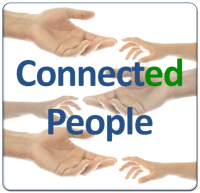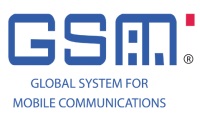I’ve got a Windows Phone 7 device that refuses to send/receive SMS’s. I’ve got an Android device that refuses to stay awake, thus not allowing me to receive phone calls. I’ve got an iOS device designed for consuming web content that refuses to stay connected to any WiFi network. Now isn’t today’s mobile technology just grand?
Don’t get me wrong, these are all wonderful toys and I love having shiny gadgets as much as the next geek. However, as their capabilities increase, so does they time I spend maintaining the gadgets and their applications. Configuring settings, hard resets, custom ROMs, googling for answers to problems that also other users have. Back in the days of hardware centric consumer electronics it used to be possible fix problems with spare parts, but when the value of the electronics is increasingly built out of bits, there’s often precious little that a repair shop could do to fix that bit for you.
With more joy comes more pain. You gain new ways to be connected with people, yet you loose something that you used to take for granted, such as phone calls and text messaging reliability. The devices get cheaper every day, which means there’s more features for the buck, like it or not. Very quickly even the entry level mobiles will have the features that a top of the line iPhone introduced a couple of years ago. The feature list will extend infinitely, but the user experience can degrade just as fast. Our future handheld devices will do a million things, cost next to zero euros, yet they may still leave the user less satisfied.
Life used to be so good
 Never thought I’d say this out loud, but I’ve actually started to consider if I should grab a Symbian phone while Nokia is still manufacturing those. You know, in a “one more for the road”, “here’s to the good times” kind of way. Then again, we all know what Symbian has become, so if I really would want to have a simple, working mobile phone for oldskool communication like phone calls and SMS (even the occasional MMS, heaven forbid), I’d need to aim for an S40 feature phone instead. Something that hasn’t been destroyed by Nokia’s futile attempts to catch the iPhone wave. The wave, which, you could say, is one reason behing the troubles that more and more people are facing with their “devices previously known as mobile phones”.
Never thought I’d say this out loud, but I’ve actually started to consider if I should grab a Symbian phone while Nokia is still manufacturing those. You know, in a “one more for the road”, “here’s to the good times” kind of way. Then again, we all know what Symbian has become, so if I really would want to have a simple, working mobile phone for oldskool communication like phone calls and SMS (even the occasional MMS, heaven forbid), I’d need to aim for an S40 feature phone instead. Something that hasn’t been destroyed by Nokia’s futile attempts to catch the iPhone wave. The wave, which, you could say, is one reason behing the troubles that more and more people are facing with their “devices previously known as mobile phones”.
And that’s where the troubles begin. I’ve lost my ability to be a feature phone user. Here’s a few reasons that come to my mind:
Input method. I haven’t used a non-QWERTY keypad for typing messages since 2005. Looking back at my handset history, using the numeric keypad was a period of roughly 9 years, and it’s now been 6 years since the end of it. I’m not getting any younger, so I’m assuming I have already lost the capability of typing with the traditional feature phone keypad. I also never adopted T9 for real, so it would be just as ackward for me.
Contacts. All my contact information on friends, co-workers, customers and online acquaintances lives in the cloud. When I install a new device, the data flows from Gmail, Facebook, Exchange Online, Twitter etc. The days of moving data around on a SIM card have truly passed. A feature phone without a cloud connection would be a silo that simply couldn’t be maintained. No way do I plan to install any more crapware like PC/Ovi Suite, Kies or something like that for data synchronization. No cables, please, these are wirelessly networked devices.
Operators. I’ve got in total 4 SIM cards at my disposal that each have unlimited mobile data plans. 2 from my employer, 2 of my own. If I would transfer my primary phone number to a feature phone, I’d be effectively closing down one 3G data pipe that is being paid for.
The legacy of the GSM revolution
The fact that certain communication methods we still use in our modern society are tied into physical SIM cards is in a way one root cause for these dilemmas. If you try to call me and one of my devices just happens to be unavailable at that time (battery is out, network is down, device is rebooting, forgot it in the other room etc.), why couldn’t I pick up the call from some other device? If you send an SMS to me and pay a few eurocents for the privilege, why am I more limited in the choice of how and where I can receive the message and reply back to you? Emails, tweets or even FB messages are available to me anywhere I am 24/7, and their cost per transaction is zero cents. Which leads me to ask the question: is the problem really the lack of GSM like reliability with today’s mobile devices, or are we again trying to solve a problem that we should no longer have?
 Nostalgia can be a fun pastime and it also serves as a tool to give us human beings perspective on where we’ve come from and where we are right now. When used in the right way, it also enables us to analyse where we will be in the future. Use it the wrong way and you’ll just end up living in the past, hoping and waiting for the train to turn on its tracks, all the while it’s getting further and further away from you. Instead of just sitting at the train station, cursing the way how the world is these days, maybe I’ll need to focus on picturing in my mind where the train is heading right now.
Nostalgia can be a fun pastime and it also serves as a tool to give us human beings perspective on where we’ve come from and where we are right now. When used in the right way, it also enables us to analyse where we will be in the future. Use it the wrong way and you’ll just end up living in the past, hoping and waiting for the train to turn on its tracks, all the while it’s getting further and further away from you. Instead of just sitting at the train station, cursing the way how the world is these days, maybe I’ll need to focus on picturing in my mind where the train is heading right now.
You see, there will become a day when you can’t reach me from a phone number any longer. In fact, the technology surrounding me today is already doing its fair share to make sure the day is getting closer and closer, even if I’m not personally asking for it to do that. It presents me a compelling, alternative method of communication and asks me with its calm voice “would you like to try this instead, or should we go back to the old way and forget about these new possibilities? It’s you’re choice, I’m here to serve you either way.” And of course we won’t stick to the old, because our curiosity will always eventually trump our resistance to change. It was a tough call for many folks to give up their land line telephones, but still it was only a matter of time. I expect we’ll see similar phenomena also in the future.
We’ll move on from “connecting people” to “connected people”. In the “connecting people” era, it used to be the technology between two people that allowed them to reach out their hands and establish the connection and communicate with one another. In the world of “connected people”, the technology has already drawn people to gather around its virtual bonfire, which is where all the communication takes place. You don’t have to be online all the time, but the connection doesn’t disappear even when someone steps offline – the flame keeps on burning. Our devices enable us to be present at the bonfire whenever we want, at different levels of intensity (active speaker, casual attendee, passive consumer) that suit our current status in the physical world. Whereas the GSM technology included text based communication only as a side product (almost an accidental invention), the “connected people” will use text as the primary and persistent for of communication, supplemented by voice and video when appropriate. Finally, the transformation will not take place as a result of the new communication services and products that the major telecom industry players have been trying to design and sell to big corporations for use in their operative business. Just like with GSM, it will ultimately be the consumer adoption of new social networks and communication tools that makes the transition from old to new a reality.
So, I’m sorry to break this to you, but there is no way back to the golden days of GSM. Having said that, I still wouldn’t mind if the product engineers and FOSS fighters working on smartphone platforms would still reserve a decent fraction of their time on providing reliable applications for supporting legacy protocols such as telephone calls and SMS. As we can learn from the story of Microsoft Windows (1.0 to 7), there’s still a tangible business value in being able to support your own legacy. And most importantly: it can be done.

0 Responses
Stay in touch with the conversation, subscribe to the RSS feed for comments on this post.